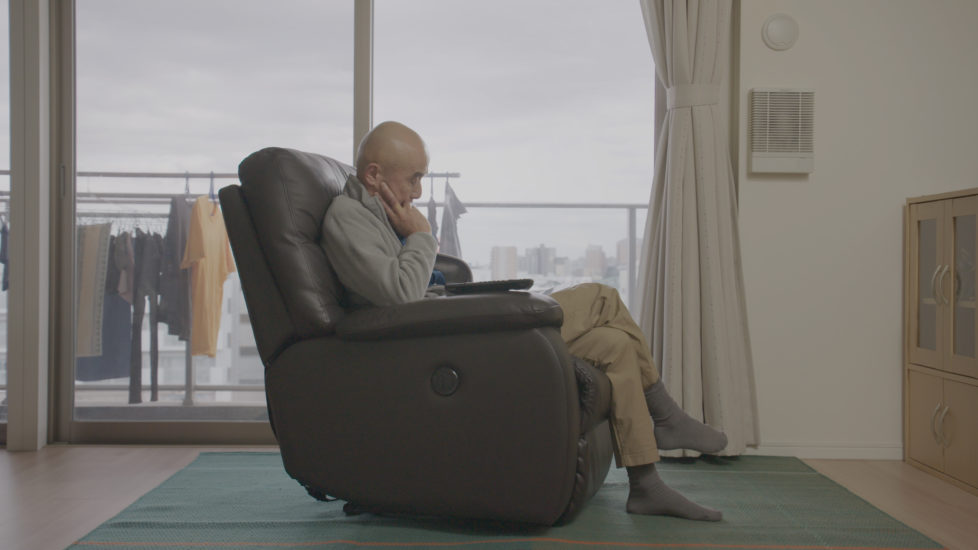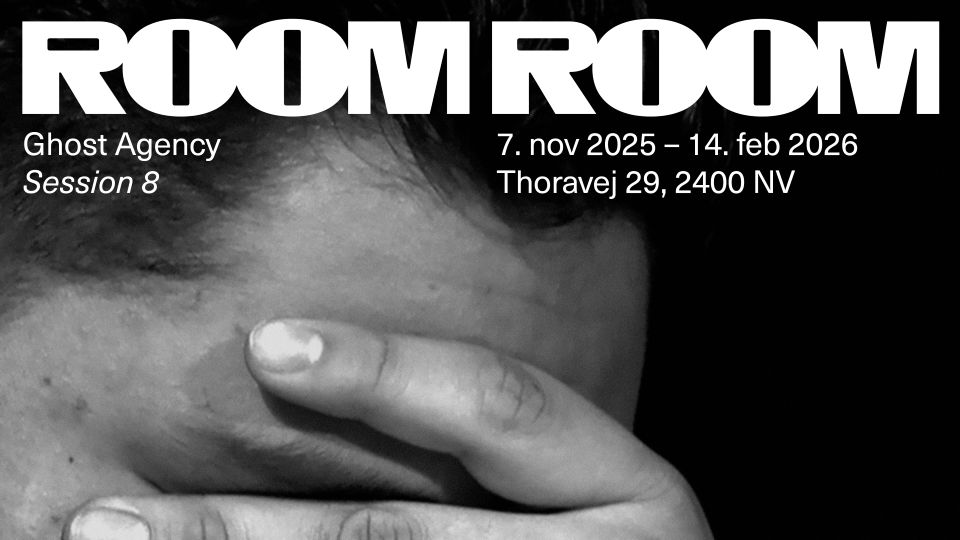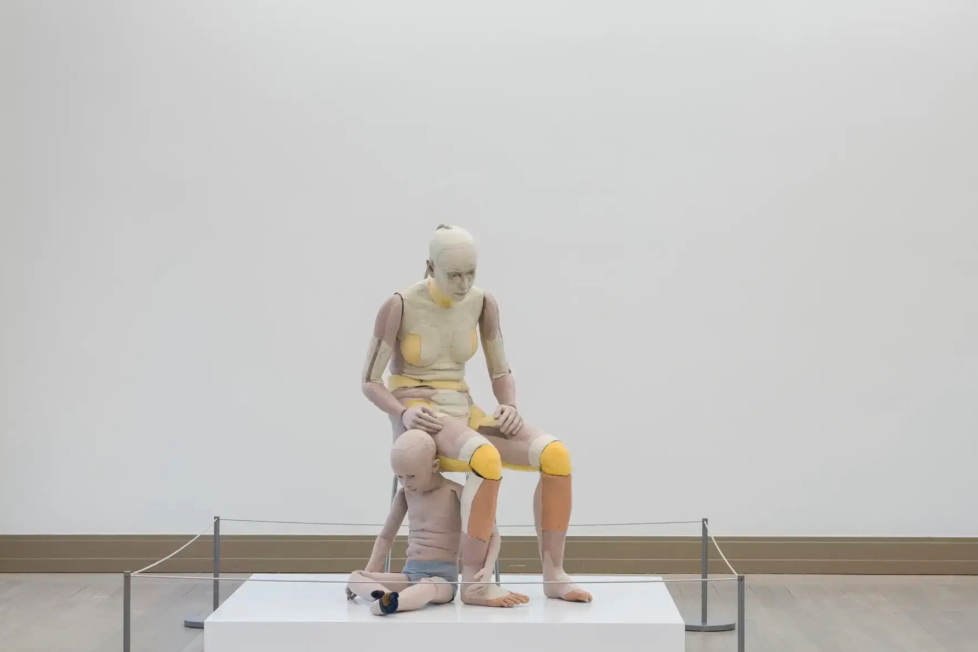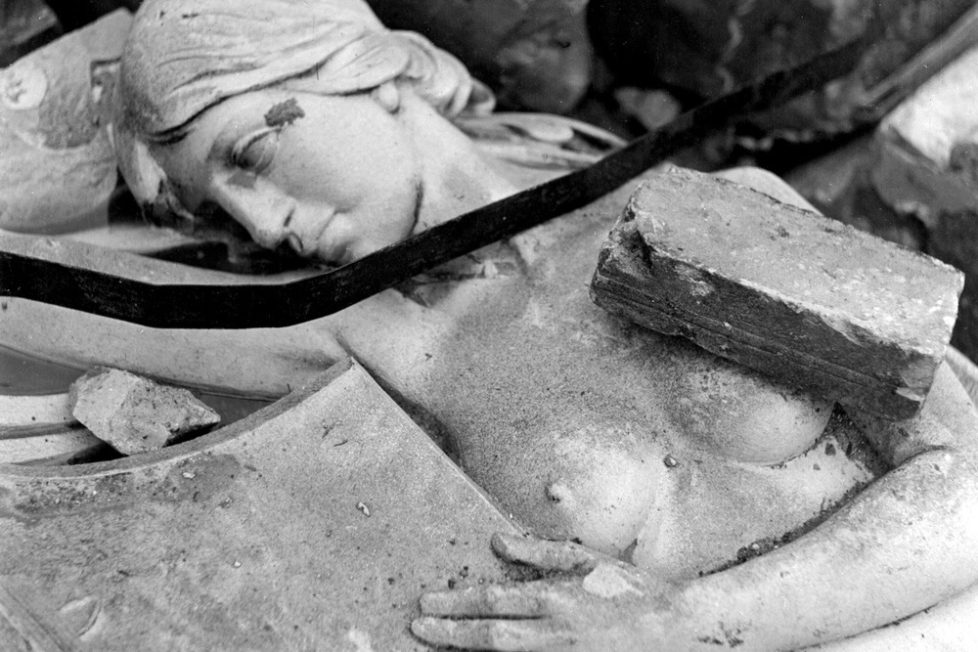
With stiff legs and jerky movements, an elderly man navigates the narrow passage between closet and bed in a cramped white box of a Tokyo apartment. Displaying some lack of co-ordination, he slumps down on the bed and begins to unbutton his shirt. One minute goes by, then another, and my impatience with the elderly man’s awkward movements is echoed in his wife’s offer of help: “Do you want me to help you?” “No, I’ll do it myself,” he replies, a little annoyed. “We have plenty of time.”
In the autumn of 2017, Masanori Kosugi, father of Japanese-born Norwegian artist Daisuke Kosugi, was diagnosed with an unusual and incurable brain disease that affects the body’s movement and balance. In time, it will also inhibit his speech and cognitive abilities. His case history forms the basis for his son’s 48-minute film A False Weight (2019), screened simultaneously at Fotogalleriet in Oslo and Jeu de Paume in Paris. The film follows its protagonist, a character called Tadashi, through three scenes in which he performs a choreography based on Masanori’s daily routines during three stages of the disease.
Tadashi is played by the Butoh dancer Toru Iwashita. Butoh is a Japanese form of dance theatre based on natural poses and patterns of movement. For this film, Toru worked closely with Masanori to familiarise himself with how Masanori perceives and experiences his own body, helping him perform and present the details of his movements as accurately as possible. The name Tadashi means “faithful” or “correct,” but despite the assumed quest for one-to-one imitation, Iwashita’s aestheticising duplication of the father’s movements creates a productive distance from actual events, thus avoiding the sentimentality that might easily have resulted from the film’s poignant basis in real life. The static camera has a similar effect. The artist never yields to the temptation to close in on Tadashi’s face, or to turn the camera in the same direction as his gaze. This abstracting approach encourages reflection on the changes that take place across the three parts of the film, rather than encourage identification with the sick man’s immediate experience.
A False Weight is reminiscent of Chantal Akerman’s similarly tripartite film Jeanne Dielman, 23 Quai du Commerce, 1080 Brussels (1975), which traces a woman’s gradual loss of control over her own life by following her routines over three days. Her unravelling is reflected in a series of micro-incidents at the kitchen counter. For example, she overcooks the potatoes and drops a newly washed spoon onto the floor. These events are mirrored in A False Weight, when Tadashi accidentally chars a piece of meat in the oven and drops a pair of chopsticks on the floor. The central theme of Kosugi’s film is also a gradual loss of control; in this case, control over one’s own body.
A former architect and construction engineer, Masanori has lived his life in accordance with modern, rational, and constructive ideas of control and efficiency, ideas which also found physical expression in his training as a bodybuilder (the film incorporates a clip depicting this). It would seem that this modern way of thinking about human life is the fundamental premise of the film’s narrative, as is also suggested by the sculpture Recliner (2019), also included in the exhibition at Fotogalleriet. The piece is a bamboo version of Charlotte Perriand and Le Corbusier’s iconic modernist chaise longue LC4, which was designed to follow the body’s natural shape. By replacing the industrial steel tubes with organic bamboo, Kosugi questions the idea of the universal and unchanging body to which the chaise longue is fitted – the same kind of body for which the seemingly functional apartment in the film was built.

Butoh first arose in the 1950s in response to a sense that modernity and Western influence and control had alienated Japanese dance from the original Japanese body. Butoh constitutes an effort to return to this original body, understood as an organism in a state of uncontrolled change, just like nature itself. Reflecting this principle, the relationship between the controlled and the uncontrolled is central to many Butoh exercises. Iwashita’s enactment of Masanori’s disease plays out a similar tension between control and non-control.
Initially, Tadashi performs his routines easily and efficiently. As the illness begins to take its toll, however, it becomes difficult for him to navigate a threshold. The tight space between the closet and the bed proves a challenge, and even his practical fleece jacket becomes hard to take off. In the film’s third and final part, it becomes apparent how the sick man resists his gradual loss of control by employing mobility aids such as a walking chair, a cane, and a wheelchair, by eating healthily, taking vitamin supplements, and guzzling protein shakes to recover after exercise and physical therapy.
Our present-day wave of self-help literature, transhumanist ideas, exercise mania, and diets establishes an image of the body as something one controls and shapes. Viewed in the light of this kind of thinking, dying ultimately becomes associated with guilt: death proves that you have not exercised enough, eaten healthily enough, or thought sufficiently positive thoughts. The increasing impatience I feel as I observe Tadashi performing his everyday tasks at ever-slower speeds forces me to reflect on this constructivist way of thinking about human life, and how it compares and relates to a more process-oriented notion of life and death.









